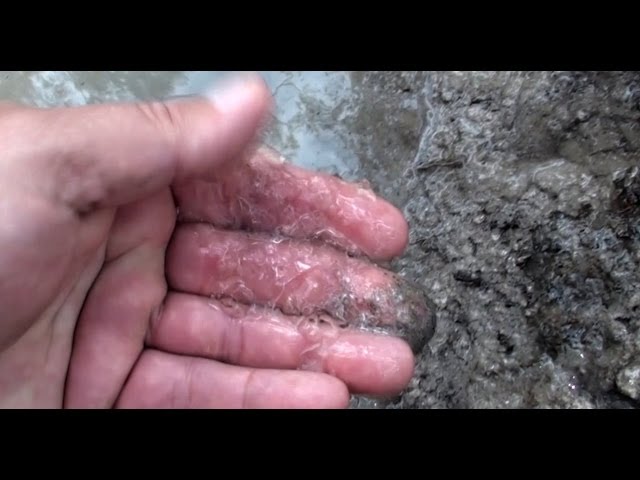How to Stop the Pond from Leaking
Are you struggling with a leaking pond and wondering how to fix it? A leaking pond can be a frustrating problem for pond owners, causing water loss and potential damage to the surrounding area. Fortunately, there are several effective methods to stop a pond from leaking, ranging from simple DIY solutions to professional pond sealing techniques. In this comprehensive guide, we will explore various strategies to help you address and resolve the issue of a leaking pond.
Identifying the Source of the Leak
Before implementing any solutions, it’s essential to accurately identify the source of the leak in your pond. Leaks can occur due to various factors, such as punctures in the pond liner, cracks in the concrete, or damaged plumbing. Begin by visually inspecting the pond for any visible signs of damage, such as tears, holes, or cracks. Additionally, monitor the water level over a period of time to determine the rate of water loss, which can provide valuable insights into the severity of the leak.
Repairing Minor Leaks with DIY Solutions
For minor leaks and small punctures in the pond liner, there are several DIY solutions that can effectively stop the leakage. One popular method involves using pond liner repair patches, which are designed to adhere to the existing liner and provide a watertight seal. These patches are often made of durable, waterproof materials and can be easily applied to the damaged area, effectively preventing further water loss.
Another DIY approach involves using specialized sealants designed specifically for pond applications. These sealants are formulated to create a flexible, long-lasting barrier that can effectively seal small leaks and minor cracks in the pond liner. When applying sealants, it’s crucial to clean and dry the affected area thoroughly to ensure proper adhesion and sealing performance.
Professional Pond Liner Repair and Replacement
In cases where the leak is more severe or extensive, seeking professional assistance for pond liner repair or replacement may be necessary. Professional pond repair services can accurately assess the extent of the damage and recommend the most appropriate course of action to address the leak. This may involve patching the damaged areas, reinforcing weak spots, or completely replacing the pond liner if it is beyond repair.
When considering pond liner replacement, it’s important to select a high-quality liner that is specifically designed for long-term durability and water containment. Modern pond liners are available in a variety of materials, including EPDM rubber, PVC, and reinforced polyethylene, each offering unique benefits in terms of flexibility, strength, and resistance to UV degradation.
Utilizing Bentonite Clay for Sealing Ponds
Bentonite clay, a natural and environmentally friendly material, has been widely used for sealing ponds and addressing leaks. When properly applied, bentonite clay forms an impermeable barrier that effectively prevents water from seeping through the pond bottom. This method is particularly beneficial for earthen ponds and can be a cost-effective solution for stopping leaks in natural or man-made ponds.
To apply bentonite clay, the pond bottom is excavated to create a smooth, even surface, and the clay is spread evenly across the area to be sealed. Once in place, the clay is hydrated, causing it to swell and form a tight seal that effectively plugs any leaks or porous areas. Proper application and compaction of bentonite clay are crucial to ensuring its sealing effectiveness, making it essential to follow recommended guidelines and best practices.
Exploring Concrete Pond Sealing Techniques
Concrete ponds are a popular choice for their durability and aesthetic appeal, but they can be susceptible to leaks if not properly maintained. To address leaks in concrete ponds, various sealing techniques can be employed to restore watertight integrity. One effective method involves using specialized concrete sealers that penetrate the surface and form a protective barrier against water intrusion.
Additionally, concrete ponds can benefit from the application of waterproofing membranes, which are specifically designed to create a seamless, waterproof coating over the entire surface. These membranes are available in liquid form and can be applied using rollers or brushes, providing a versatile and effective solution for sealing concrete ponds and preventing water loss.
Implementing Proper Pond Maintenance Practices
Preventing pond leaks starts with implementing proper maintenance practices to ensure the long-term integrity of the pond structure. Regular inspections of the pond liner, concrete surfaces, and plumbing connections can help identify potential issues before they escalate into leaks. Additionally, maintaining proper water levels and monitoring for any unexpected changes can provide early indications of a developing leak.
Maintaining healthy aquatic vegetation and balanced water quality also plays a crucial role in preserving the structural integrity of the pond. By promoting a thriving ecosystem within the pond, the natural processes of nutrient cycling and oxygenation can contribute to the overall health of the pond and minimize the risk of leaks or structural damage.
Conclusion
In conclusion, addressing a leaking pond requires a combination of proactive maintenance, targeted repairs, and strategic sealing techniques. By accurately identifying the source of the leak and implementing appropriate solutions, pond owners can effectively stop leaks and preserve the integrity of their ponds. Whether through DIY patching, professional repair services, or specialized sealing methods, there are numerous options available to address pond leaks and ensure long-term water containment. By taking proactive measures and investing in proper maintenance, pond owners can enjoy a leak-free and sustainable aquatic environment for years to come.


